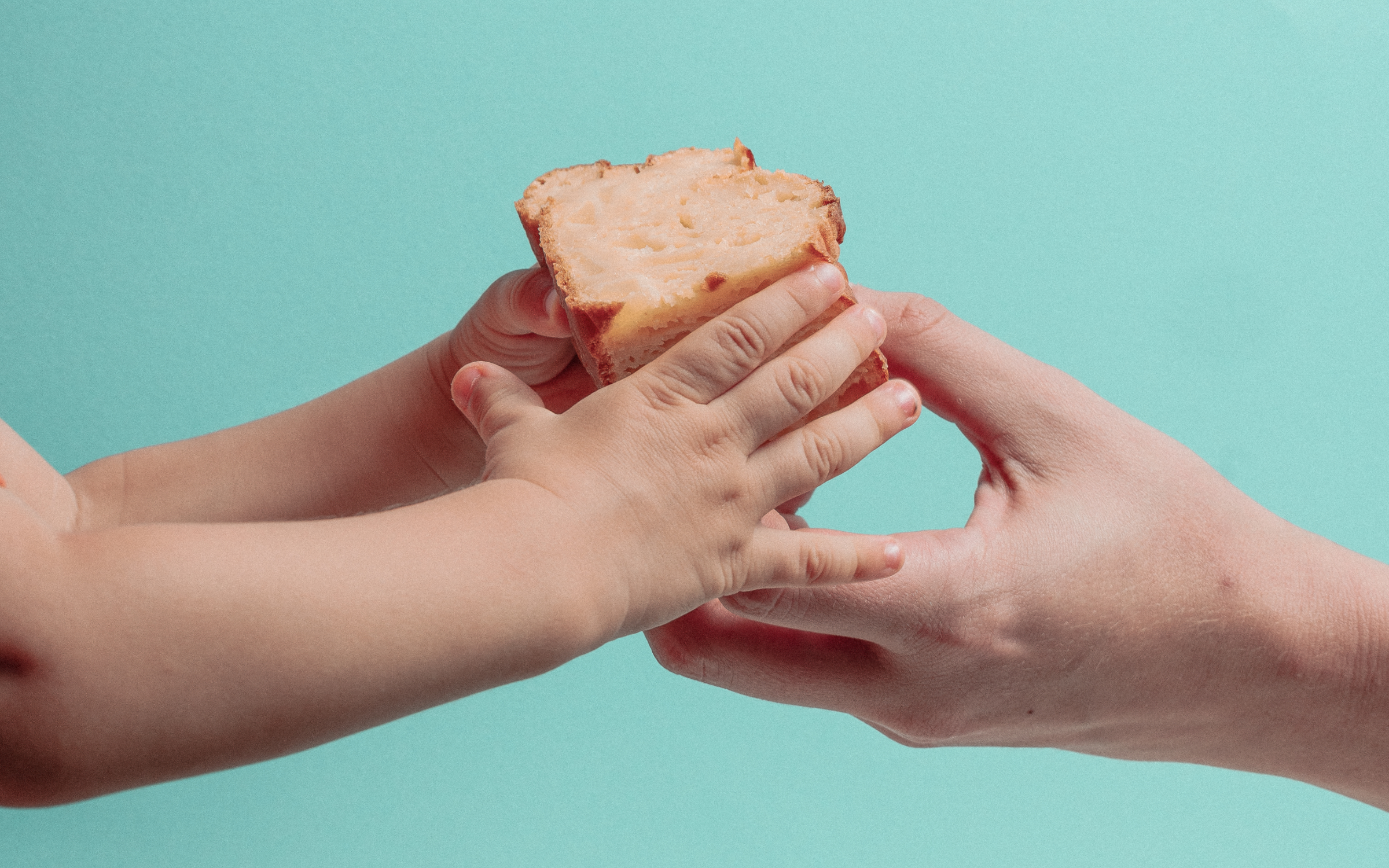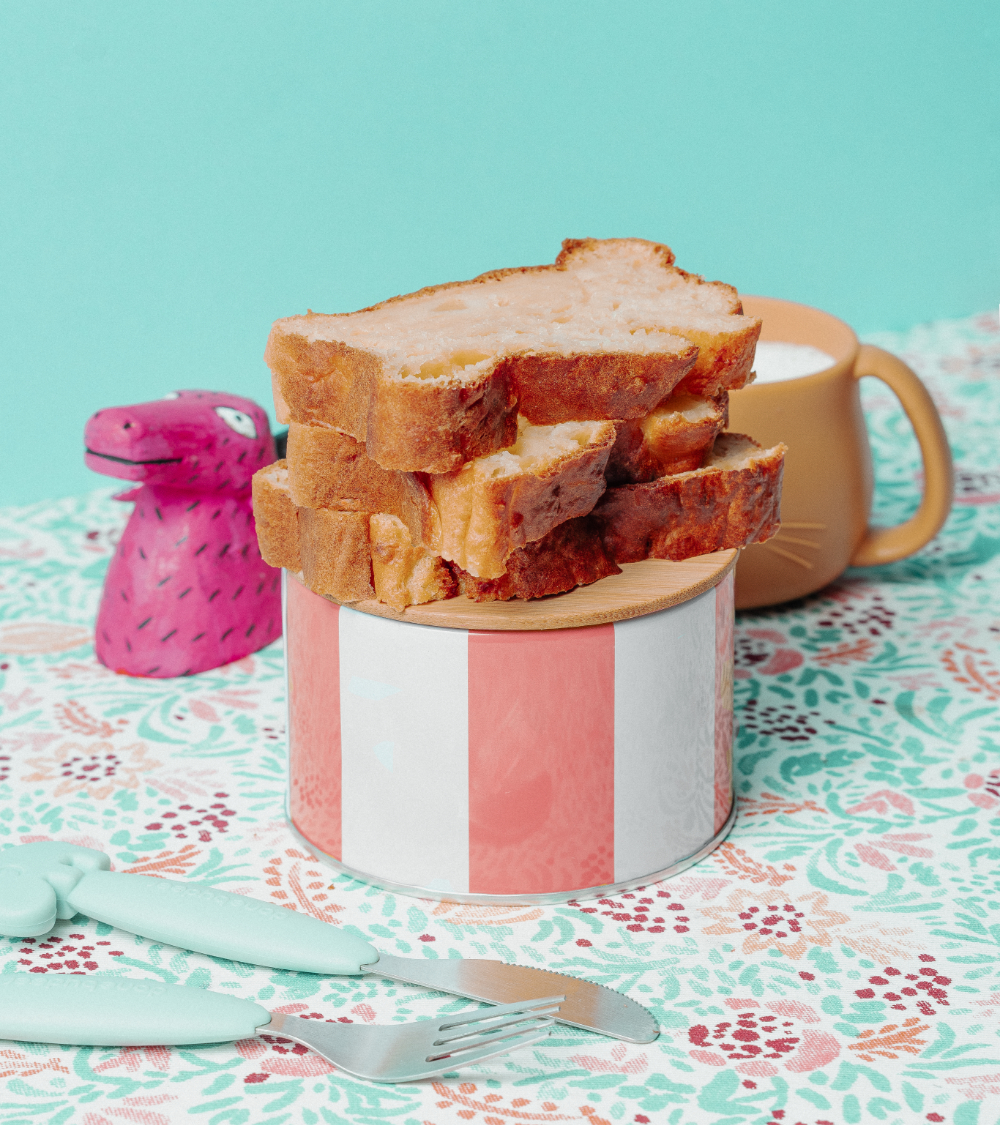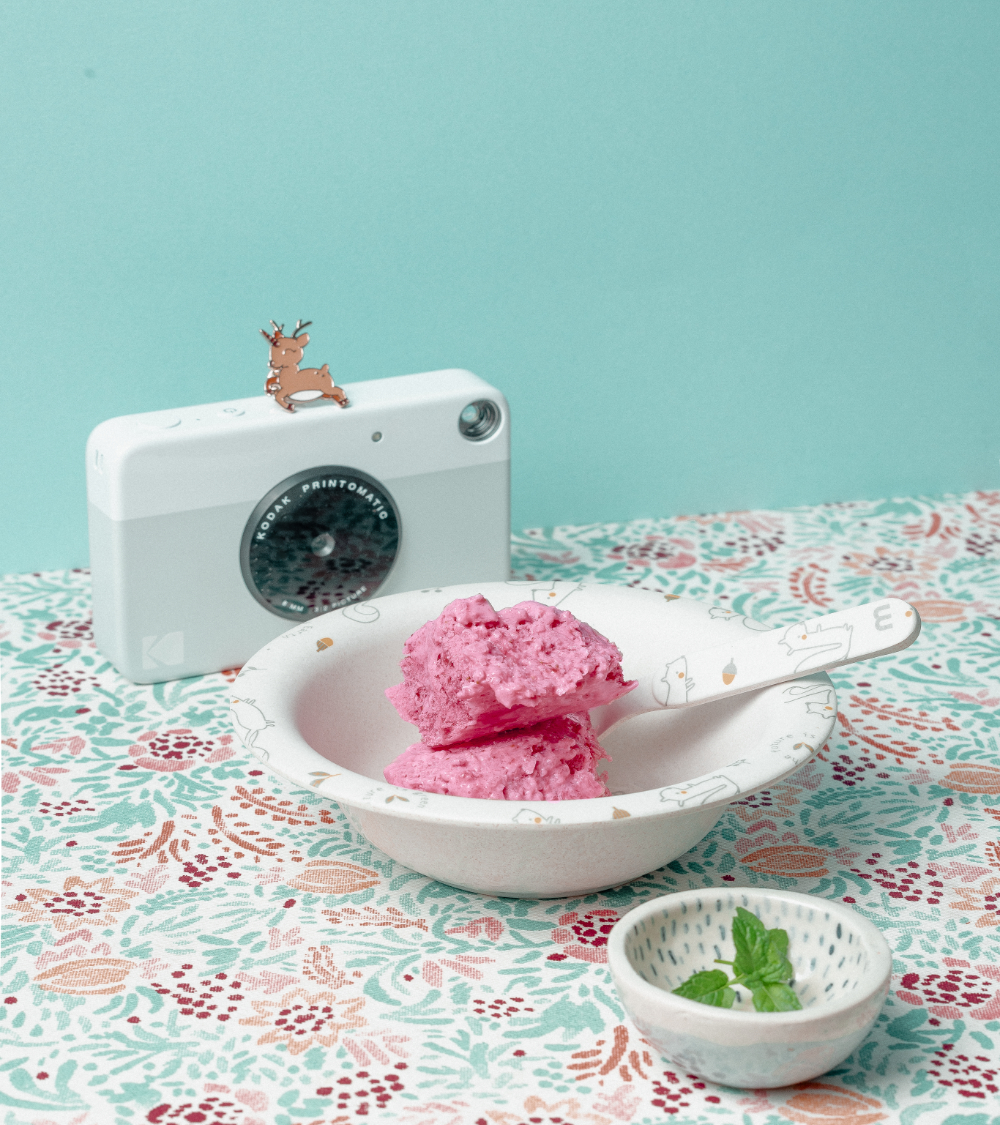The New Gastronome
My Daughter Won’t Eat Sugar
Until She’s Four!
by Eugenio Signoroni
by Eugenio Signoroni

I repeated it to everyone before Emilia was born. I was very proud of it. It seemed like a sacred battle to me. But, of course, I was exaggerating; I knew it too. Nobody, not even the most rigid nutritionists, urges you to eliminate sugar until a child is four years old. Often they stop at the two and do not even suggest deleting it but limiting it, encircling it carefully, and replacing sucrose or fructose with other types of sugars. Not me. I had abolished it. Why? Because pushing the bar a little bit further seemed a good way not to give in too easily to the sugary temptation. Did I succeed? Not really.
Maybe it’s because I learned that parenthood is continuous training between rooted certainties and brutal clashes with reality. A zigzagging between “this thing I will never do” and “give her what she wants as long as she stops.” An obstacle course where at the beginning, you feel like an Olympic champion, and after a while, you realize that the most you will be able to achieve is to have knocked down half of it without even reaching the end, and it is an exceptional result. I have learned that constantly questioning what type of parent I would be is not a bad thing. On the contrary, I have discovered, slowly, I must admit, that this is also the beauty of this new life. Because it is a new life and you are also learning everything from scratch. There are no mathematical formulas or schemes to help you out. Instead, you will have to learn to navigate on sight and question even those few certainties you have acquired over time. You discover that resilience, this recently overused word, defined as “the ability of a material to absorb a shock without breaking” in the dictionary, must be your main ally. It looks terrible, I realize that. But instead, it’s beautiful and said by someone who has acquired this awareness with difficulty. And also because as you grow up, as a parent, you learn to manage the sense of protection you have towards your child. You realize that the choices you make seem the best for her or him are actually the best for you. I learned this from my wife Roberta, who found herself much more at ease in this new task than I (and, without wanting to bother with notions of psychology that I don’t have, I would say not for maternal attitude).
Finally, back to sugar. I have to admit that attempts at making sugar-free desserts haven’t always been exciting. In some cases, including the first birthday cake that was really disastrous, they suggested to me that perhaps a softer approach might be wise. I was feeling the people around me becoming hostile about it. Emilia, who passed the first six months of her life semi-locked down, did not know what sugar was. She found it more and more easily around her later on; snacks in kindergarten offered by friends or family, parties, and during my or Roberta’s breakfast. To Emilia, like all other meals, breakfast was a moment of discovery during which she wanted to taste whatever we ingest, coffee aside … and just at that moment, the question arises: what’s worse? Forbid her to bite into the brioche or the bread, butter, and jam that you enjoy with great pleasure or let her taste it, maybe just a little, but let her taste it?
And here I have to add another element that I learned as a parent: children learn mainly through example; they try to do what you always do, and then it is useless to deprive them of something they see you do every morning, sooner or later they will want to do it, and you will give in, losing credibility in their eyes. So, after a year and a half, I gave up. I decided it would be healthier for everyone to loosen their grip and establish that sugar could be consumed in moderation but was no longer the public enemy. I determined that she might indulge in packaged cookies, cakes, and ice cream from time to time. Of course, the bare minimum and continuing to think about how to replace sucrose and fructose with other healthier products.
A. D V. E. R. T. I. S. I. N. G
So why such a decisive no to sugar? This belief was born in 2018 while I was working on the book La felicità ha il sapore della salute, a beautiful four-handed essay written for Slow Food Editore by the doctor Luigi Fontana and by Vittorio Fusari, a chef from Brescia and my great friend who, unfortunately, passed away in January 2020. In a passage of this book, Fontana said, “sweets should be left as much as possible on the margins of our diet, at least their consumption must not be regular, both for adults and for children” and then again, “we know that children like the sweet taste but the intensity of this flavor they love, when they are small, is that of mother’s milk, which is less than sugar. There is no need to create an addiction in them with a more pronounced flavor. They will come into contact with it later in the years when it will be easier for them not to be involved ». This last idea, mainly that breast milk should be the maximum sweetness level for the baby, struck me a lot. I had never really reflected on the fact that many foods are already very sweet by their nature, and there is no need to go and highlight their sweetness if not because of habit. I also reasoned that adding sugar to many products aimlessly results from incorrect shopping. After all, to remove this product that made my skin crawl, it was enough to choose the products that already had sugar in large quantities at the right time: persimmons and chestnuts in autumn, peaches, and strawberries in summer and spring. And at that point, there was no reason to introduce an ingredient into the daily diet that, in addition to being bad – long-term refined sugar creates problems for the cardiovascular system and alters metabolic cycles, as well as stimulating the sense of hunger and making us, consequently, eating more – changes the original flavor of things and covers it. Yes, because as well as from a nutritional point of view, sugar is also a gustatory problem: I find that it flattens the flavors, making them homogeneous. Instead, I wanted for Emilia, and still want, the pleasure of continuously discovering new flavors. Hence the decision not to try to replace sugar but to eliminate it completely by mainly using ripe fruit instead. Someone may object: yes, but honey? Eh … I thought so, too; too bad that very young children are advised to avoid it because it can cause a disease known as infantile botulism.
Today Emilia has discovered sugar, and no doubt about it, she likes it. As for the rest, she likes salt. But when I see her choose a spoonful of very acidic yogurt or a piece of watermelon instead of a biscuit for breakfast, I’m happy and feel I’ve made the right choice.
 “Me and Emilia”
“Me and Emilia”

Here is the recipe for the legendary birthday cake; a bit fixed, though …
Ingredients for 6/8 servings
Peel the apples and, cut them into chunks, sprinkle them with the juice of half a lemon. Blend half of it and set it aside. Separate the yolks from the whites. Beat the egg whites until stiff and set aside. Then mix the egg yolks with the yogurt and whip until the mixture is slightly fluffy. Then add the vanilla pulp: cut the pod in half and, using the back of a knife, extract the seeds. Next, mix the apple smoothie, baking powder, and sifted flour. Mix gently, then add the chopped apples and salt. Finally, add the whipped egg whites and incorporate them, mixing from top to bottom.
In a baking tray covered with parchment paper, cook for 40-45 minutes at 180 ° C in a static oven.
Remove from the oven, let it cool, then sprinkle with powdered sug… oops! No, serve like this!

Ingredients for 4 servings
Cut the peaches in half, remove the stones, then cook two in a non-stick pan with the smooth side until you get a slightly amber color. Remove from the heat, and put in a deep dish covered with a sheet of cling film. Blend the almonds with half a liter of water until you get a smooth mixture. Add the seeds of half a vanilla pod to the mixture, mix well, then place in a steel bowl and let it rest for half an hour. Next, peel and chop the peach kept aside. Put it in a saucepan with the empty vanilla pod, and cook until the pulp is completely undone. Then pass through the sieve. Place the bowl with the almond liquid on a larger one where you have previously put 2/3 of ice and a third of salt. Then mix the almond liquid with a whisk, continuously scraping the walls. In about ten minutes, your granita will be ready. In a saucer, place a spoonful of peach coulis, the roasted peach on top of it, and the almond granita, and complete, if you like, with a sprinkling of cocoa.
Chestnuts and Persimmons

Ingredients for 4 servings
In a saucepan, cook the dried chestnuts with milk until they are very tender. Then pass them to a vegetable mill. Put the puree in a bowl and place a spoonful of persimmon pulp lightly mashed with a fork on top.
Rice Cake

Ingredients for 6/8 servings
Cook the rice in milk, letting it simmer for about an hour or until the grains tend to come apart. Next, you will have to get some kind of soft cream. At this point, add the eggs, the grated rind of the lemon, and the raisins. Mix well, then place in a non-stick paper-covered pan and cook for 45-50 minutes at 180 ° C. Remove from the oven and let cool.
Strawberry Ice Cream

Ingredients for 4 servings
Clean the strawberries, put them in a blender with the yogurt, then run the blender. Once you have this puree, put it in a low container and store it in the freezer overnight. Remove the ice cream from the freezer 10 minutes before serving.
The opinions expressed in the articles of this magazine do not necessarily represent the views of
The New Gastronome and The University of Gastronomic Sciences of Pollenzo.
Photos ©Aarón Gómez Figueroa • Hand model Albertito Ferrarini
